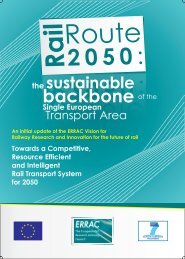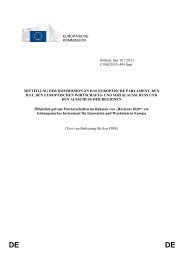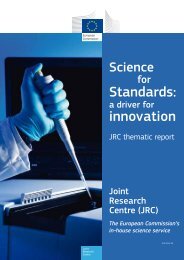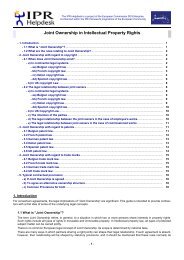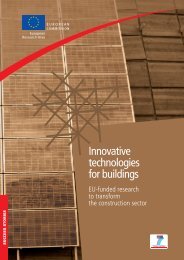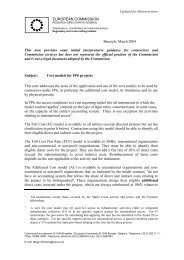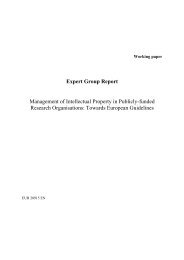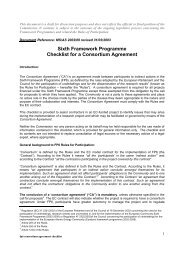Guide to Financial Issues relating to FP7 Indirect Actions - KoWi
Guide to Financial Issues relating to FP7 Indirect Actions - KoWi
Guide to Financial Issues relating to FP7 Indirect Actions - KoWi
Create successful ePaper yourself
Turn your PDF publications into a flip-book with our unique Google optimized e-Paper software.
1. either any legal entity established as such by national law 31 ,<br />
2. or an international organisation, which is an intergovernmental organisation<br />
(for instance, the UN), other than the European Union /Eura<strong>to</strong>m, which has<br />
legal personality under international public law, as well as any specialised<br />
agency set up by such an international organisation 32<br />
secondary and higher education establishments (for example, universities whether<br />
<br />
or not public/or for profit)<br />
research organisations: this means a legal entity which:<br />
<br />
• is established as a non-profit organisation; a legal entity is qualified as "nonprofit"<br />
when considered as such by national or international law.<br />
Associations or explicit non-profit making legal entities would fit here (see<br />
below); and<br />
• carries out research or technological development as one of its main objectives<br />
In most cases the type of legal entity will be determined by the participants' national<br />
law. It will be up <strong>to</strong> the legal entity <strong>to</strong> prove it. In certain cases, a legal entity may find<br />
it difficult <strong>to</strong> determine its status. In these cases other indicative facts or evidence<br />
should be established.<br />
Example:<br />
A beneficiary could indicate its status under national tax law <strong>to</strong> support its claim <strong>to</strong> be a nonprofit<br />
research organisation.<br />
SMEs: means small and medium size enterprises within the meaning of<br />
<br />
Commission Recommendation 2003/361/EC in the version of 6 May 2003.<br />
According <strong>to</strong> Article 2 of the Annex, an SME (Micro, Small or Medium-sized<br />
Enterprise) is an enterprise which:<br />
• has fewer than 250 employees,<br />
• has an annual turnover not exceeding 50 million EUR, and/or<br />
• has an annual balance-sheet <strong>to</strong>tal not exceeding 43 million EUR.<br />
According <strong>to</strong> the new SME definition, possible relationships with other enterprises<br />
must be taken in<strong>to</strong> account when calculating the data of the enterprise. For further<br />
information check the full text of Recommendation 2003/361/EC in the version of<br />
6 May 2003.<br />
Research centres, research institutes, contract research organisations or<br />
consultancy firms will not be considered eligible SMEs for the purposes of the Cooperative<br />
and Collective research schemes.<br />
The Commission will assist in providing some indica<strong>to</strong>rs for assessment, support and<br />
registration of the legal entities in a unique Commission database. This database will<br />
recognise the particular legal status of each beneficiary, which will be used for all its<br />
participations in projects under the 7 th Framework Programme.<br />
31 To be noticed that the concept of "public body" in <strong>FP7</strong> is more restrictive than in FP6<br />
32 For these and the following definitions please see Article 2 of the 7 th Framework Programme "Rules for the<br />
participation of undertakings, research centres and universities …(..)", Regulation (EC) N° 1906/2006 of the<br />
European Parliament and the Council of 18 th December 2006<br />
80



